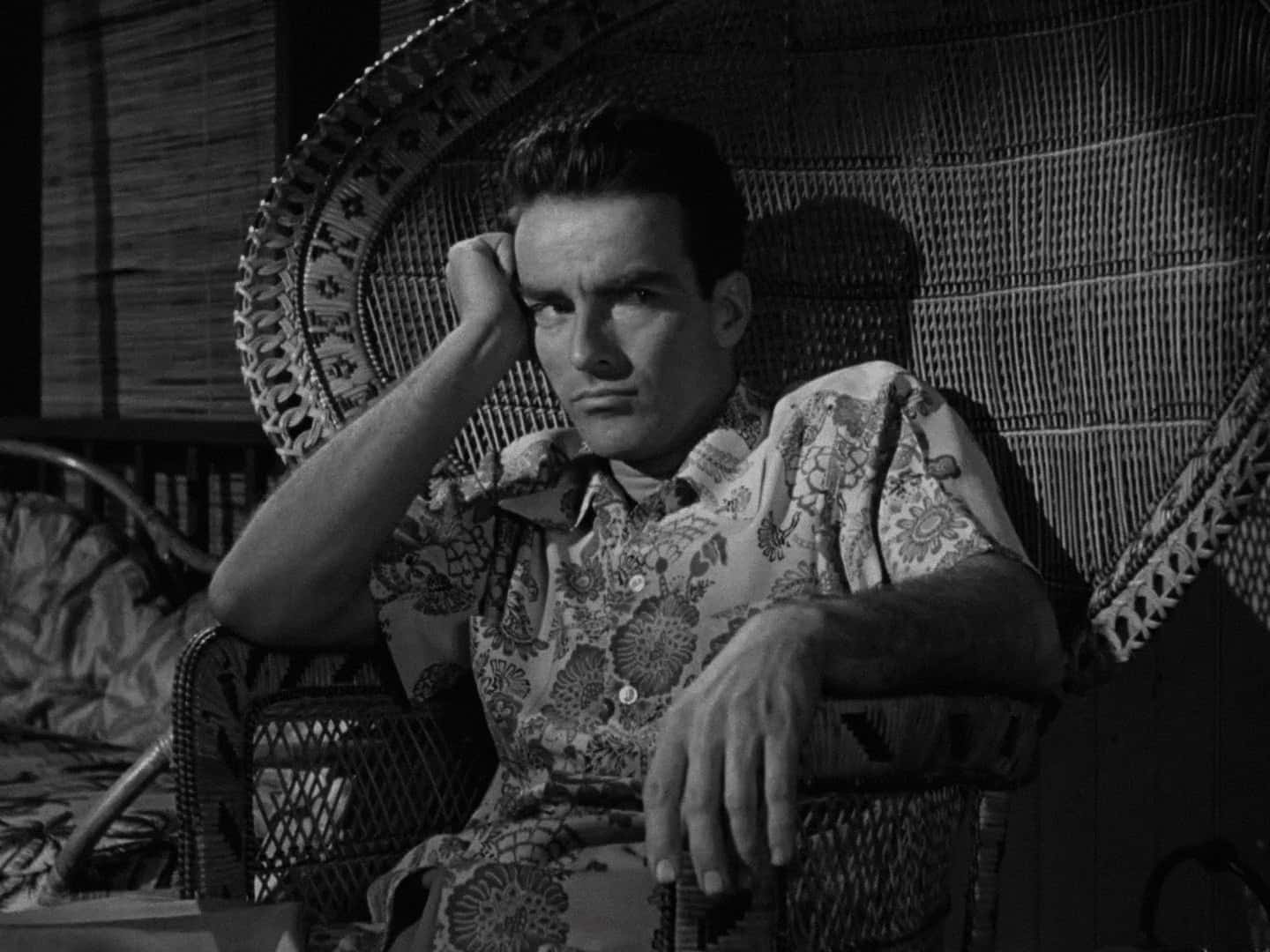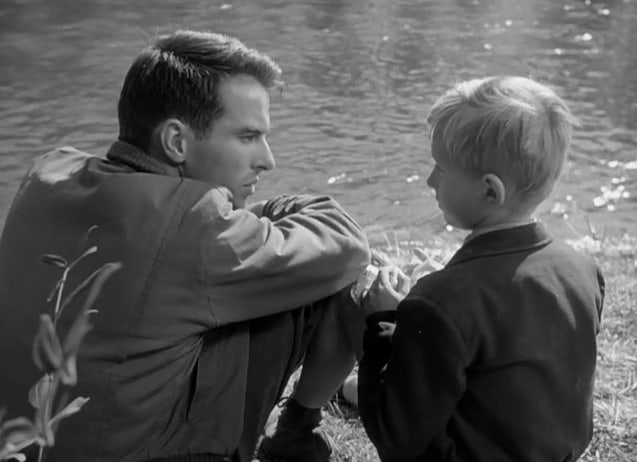
In the late 1940s and ’50s, a new dawn broke over Hollywood. In stark contrast to the archetypal “strong” and “silent” performances of the pre-war generation, men were increasingly being presented in rebellious new terms that highlighted their sensitivity and their introspection over the toughness favored by forebears like John Wayne and Gary Cooper. Leading the charge in this respect were three young catalyzers, each well-versed in the “Method” style of acting: Marlon Brando, James Dean, and Montgomery Clift.
Today, most of us are well aware of the cult of Brando and Dean, whether we partake in their idolization or not. But curiously, the last of this game-changing trio has largely been forgotten today. This is somewhat baffling; career-wise, Montgomery Clift was no less successful than Brando or Dean. In fact, his carefully measured acting style tends to bear up better nowadays than Dean’s, which can strike as overly-theatrical at times.
During the ’50s, Clift’s substantial talents were in no need of the publicity that evades him today. He was often described as one of the finest actors of his time, and he earned four Oscar nominations in roles that saw him work with directing titans like Alfred Hitchcock and Fred Zinnemann, as well as hold his own against giants of the screen like John Wayne, Burt Lancaster, Frank Sinatra, Brando and Elizabeth Taylor. He also left a lasting mark on the biz through his decision to delay signing a studio contract until he was two films-deep into his career, a tactic that would go on to revolutionize the way future stars negotiated with studios.

Clift first made his mark in Zinnemann’s 1948 film The Search, which saw him play an army engineer who grows close to a child refugee of the Holocaust while stationed in post-WW2 Germany. The part didn’t demand much specificity in terms of his character’s army work, but Clift nevertheless conducted extensive research into the role, interviewing military engineers and even rewriting some of his lines to better reflect their reality. His efforts contributed to giving The Search an almost documentary-like feel; remarkable considering its plot could easily have been framed in overly-sentimental terms.
Director Zinnemann, for whom The Search was a personal passion project, was impressed enough with Clift’s matching commitment to the job to hand-pick him for a part in From Here to Eternity, in which he plays a principled soldier who is bullied by his Captain for refusing to join the regimental boxing team. This performance as an alienated loner cemented Clift’s burgeoning reputation as an actor naturally inclined towards nuanced, tragically sensitive depictions of masculinity – he had already been distinguished as such by a star turn as close friend Elizabeth Taylor’s conflicted lover in A Place in the Sun – leading to him earning his third Oscar nomination in five years.
Clift went on to transmit that same sense of inner turmoil in his portrayal of a priest whose safety is compromised by the Seal of the Confessional in Hitchcock’s I Confess. Other roles would flesh out his repertoire, proving Clift to be more versatile than the shared themes of his best-remembered roles would suggest: in The Heiress, he charmed as a surprisingly likeable fortune-hunter, while Vittorio De Sica’s Indiscretion of an American Wife saw him excite as one half of a will-they-won’t-they pair.
But as the persisting cult of Dean shows, whether rightly or wrongly, these days our retrospective interest in a person tends to lie more in psychological appeal than the strength of their work. Clift is a mine of intrigue in this respect, further begging the question as to why he remains so under-remembered.
From the outset of his career, Clift cut an idiosyncratic presence in Hollywood, keeping old friends, old clothes, and a tiny apartment in New York City as far away as possible from the typical society of a successful actor of the period. The strength of his self-confidence and the depth of his self-preservation fascinated the pre-directing Stanley Kubrick, who was one of few journalists to wrangle a meeting with Clift (as evidenced in Kubrick’s candid photo essay on Clift for Look magazine, aptly titled “Glamor Boy in Baggy Pants”).
Like Dean, Clift had relationships with men during an intensely homophobic period in Hollywood and came to be viewed as either a tortured soul or an inscrutable, enigmatic presence. Like Dean, Clift was involved in a car accident at a young age: an eerie twist of fate saw him fall asleep at the wheel and crash into a telephone pole less than eight months after Dean’s untimely death. Unlike Dean, however, Clift survived: the oft-told account of the scene of the crash has it that Rock Hudson pulled Clift from the mangled wreckage, and Elizabeth Taylor cradled him in her arms, saving him from choking by pulling his own teeth out of his throat.
There is something deeply “Hollywood” about this tragic image itself as if it could have been the climactic scene in an impeccably cast drama of that period’s style. What followed for Clift was too messy for fiction, however; his former acting teacher Robert Lewis called it the “longest suicide in Hollywood history”. Extensive reconstructive facial surgery and months of rehabilitation repaired most of the damage, but Clift’s once-shining, youthful looks now had the weathered look of a much older man. Clift continued filming Raintree County, the shooting of which had been interrupted by his crash, but a deepening addiction to drink and painkillers made things difficult, and there were stories of unruly behavior that required police supervision of Clift. Nevertheless, the film did well, if only because it provided audiences with their first chance to see Clift’s changed appearance (some scenes had been filmed pre-crash, so comparisons on looks and strength of performance could easily be made). That transformation would continue to capture the imagination decades later: Joe Strummer of The Clash dedicated a song on the “London Calling” album to Clift, with the lyrics urging directors to “shoot his right profile” in order to mask the scars on the left side of his face.
His post-crash career was marred by his addictions, as well as deep-seated insecurities that undermined his once-easy confidence. Anecdotes from the set of his later films told of an actor who could barely remember his lines; even the use of “idiot boards” (placards bearing an actor’s lines placed out of view of the camera) on the set of Freud: The Secret Passion confounded Clift, who found it difficult to remember where they had been put. Attempts to initiate a much-needed comeback fell through, too: performances like the ones he gave as a conflicted journalist in Lonelyhearts and as a Jewish soldier facing anti-Semitism in The Young Lions failed to garner much critical attention, despite being thematically similar to the kind of roles Clift was best at.
But beneath the changing face and the strain of addiction, Clift’s old talents still glimmered. The behind-the-scenes troubles on the set of Freud never bore through in his performance, which was praised for bringing unexpected emotional richness to the rather dry titular role. The same can be said for his haunting turn in The Misfits: although Clift sustained injuries on set and his memory problem threatened to rear its head again, his innate skill resurfaced to save the day. For Elia Kazan’s Wild River, Clift once again tapped into his latent actor’s instincts, imbuing his role as a reserved government employee with the same enigmatic air that had captured the imagination of his earlier audiences. And then there was his 12-minute-long turn as a cognitively disabled man in Stanley Kramer’s post-war courtroom drama Judgment at Nuremberg, which earned Clift his fourth (and final) Oscar nomination. Even now, in an acting landscape saturated with Method actors (a further example of the profound legacy Clift, Brando and Dean have had), Clift’s raw, intense performance as a victim of a Nazi sterilization program is particularly striking.
As with many of Clift’s morally complex performances, there is an urge to ascribe his mastery of conveying internal conflict to his own troubled life. That is, of course, the great trick Method acting plays on its audiences, and it’s why actors who favor that approach tend to enjoy such a hold over audiences’ imaginations. But Clift, an original pioneer of this live-in-character style of acting, has so far eluded proper appreciation, being forgotten in the annals of time amongst less revolutionary and less talented peers. The indelible legacy he left, and the persisting resilience of his performances — many of which hold up even better today than they originally did — demands this be rectified.
Related Topics: James Dean, Method Acting, Montgomery Clift, Old Ass Movies

